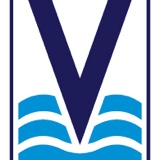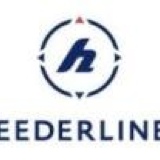Title Page
-
Site conducted
-
Conducted on
-
Prepared by
-
Location
Safe Access and Egress
-
Are all access points free from obstructions
SMS Manual
-
3.4.1 Is the name and contact details of the DPA and Deputy DPA displayed and up to date
-
3.5 - 3.6 Are both The Health and Safety Policy & Environmental Policy in date signed and on display
-
3.8 Is the Inventory of hazardous materials up to date (sample of the last entry)
-
4.3 It is a requirement of ISM that staff are aware of their duties towards safe ship operations and procedures that should be followed, as described within the SMS Manuals. This is achieved through:<br>• Staff Training programmes which expressly include familiarisation with the Company’s SMS, Company policies, and lines of communication.<br>• Access to SMS documentation and other codes of practice.
-
4.6 Permit to Work<br>Once this has been completed the Authorised Officer should complete the after work checks and both authorising officer and responsible person sign of the permit
-
4.6.1.2 Point Of Work Assessment (PoWA)<br>A Point of Work Assessment (dynamic risk assessment) is to be used by crew and contractors prior to work starting
-
4.6.6 Alterations and Amendments (A&A)<br>Evidence one of the following: <br> • Upgrades or alterations to vessel equipment of systems<br>• Amendments to MPM job cards<br>• Change of Procedure<br>• Safety Brief tracking
-
5.1.3 Safety Management Communications Quarterly <br>Safety Focus<br>These are issued by the Safety and Compliance team to all locations in English, Russian and French. The team will use the three-month period to raise awareness on the issue and ask that all managers include the subject in their team briefings and all employees take time to discuss the issue. The current safety focus shall be displayed on all company safety noticeboards.<br>
-
5.2.2 (3) Company Internal Audits<br>The Company manages a program of Internal Audits to verify that safety and environmental protection practices complies with the Company SMS. The audit will be carried out using prepared checklists and report forms. In addition, for vessel audits, the Master will record findings on a Deficiency Progress Report (DPR).
-
5.3.2 On Completion of Corrective Action<br>Once corrective action has been taken, the ‘close out’ section of the DPR will be completed, signed, and dated by the Master or Manager of location to advise the Auditor of close out
-
7.5 TRAINING (a) <br>All Officers and Crew newly appointed to the Company receive familiarisation training in respect of emergency duties and safety equipment, and their routine duties and functions for the safe operation of the ship and the protection of the marine environment • What to do:<br>− In the event of Man Overboard<br>− After finding fire or smoke on board<br>− When the fire or abandon ship alarm is sounded
-
7.7.1 Safety Training<br>A Safety Familiarisation Sheet must be filled in and signed by the crew member, or contractor, to confirm they have received training.
Shipboard Manual
-
2.3.2 Safety Officer<br>The company designates the Safety Officer, During their appointment the Company will provide appropriate training for the Safety<br>Officer
-
2.3.5 Powers of Safety Representatives (Interview Rep)<br>Safety Representatives may, after notifying the Master:<br>• Carry out their own investigation or inspection.<br>• Make representations to the Company on hazards or near misses.<br>• Make representations to the Master or company on health and safety matters<br>such as risk assessment findings, training, and introduction of new technology.<br>• Request, at the safety committee meeting, that the Safety Officer undertakes an<br>investigation and report back to them.<br>• Access the statutory records held by the Safety Officer and externally submitted<br>incident reports.
-
3.1 SAFETY OF CREW AND PASSENGERS DURING LOADING AND DISCHARGING OPERATIONS
-
3.1.4 Safe System of Work – Vehicle Deck Loading Review deck operations
-
3.2.3 Completion of Cargo Operations<br>On completion of loading, the Chief Officer must be satisfied that:<br>• All cargo is secured as per the Cargo Securing Manual.<br>• All lashing gear and loose trestles are secured.<br>• No diesels running on Main Vehicle Deck (MVD) or Lower Vehicle Deck (LVD)<br>(Commodore Goodwill), Deck 3 (Commodore Clipper).<br>• Draft and Stability are satisfactory.<br>• Ship is upright, and heeling system blocked.<br>• Cargo papers and passenger list are on board.<br>• The Master is informed of hazardous cargo.<br>• The Chief Officer must check the T-card board.
-
3.5 PROCEDURES RELATING TO BAGGAGE PODS<br>Baggage pods are subject to annual maintenance. Should a defect be discovered during the season the pod is to be withdrawn from use and returned to Poole stores. A Pod Defect Form shall be emailed to the contracted repair company as detailed on the defect form.
-
3.5.2 Manual Handling Instruction
-
3.6.1 Supply and certification of Mooring Ropes<br>To be ordered through Poole stores, directly from Rope and Tackle or Survitec. The ropes<br>will be delivered accompanied by an original numbered manufacturer’s certificate giving<br>a full specification of the rope, its size, Safe Working Load (SWL) and breaking strain
-
3.7 REEFER OPERATIONS<br>General Only company employees may connect or disconnect reefer units onboard company vessels
-
Temperature Logging<br>The temperature of each refrigerated unit, whether on ship’s power or running<br>independently, will be logged at the following stages.<br>1) Arrival at the loading port – Freight Manager responsible<br>2) Loading onboard the vessel – Chief Officer responsible<br>3) Prior to discharge at the discharge port – Chief Officer responsible
-
5.2.1 Portable Electrical Equipment<br>Generally defined as equipment that has a cable and plug, which can easily be moved from place to place
-
COSHH Manual
-
Asbestos<br>Asbestos Management Surveys have been conducted where applicable
-
SECTION 2. CONTROL MEASURES IN PLACE<br>A cleaning service for overalls is provided and they should be cleaned regularly in order to minimise the risk of residual contamination
-
SECTION 3. LABELLING AND STORAGE<br>Secondary containers usually hold chemicals that are transferred from a primary container. These must comply with the primary container’s markings.
-
Storage<br>Chemicals must be stored in dedicated storage cabinets / boxes or in storage rooms that have restricted access,
Code of Safe Working Practices
-
1.2 What does a safe working culture look like? Sample crew / staff:<br>clearly defined expectations;<br>good communications;<br>clear leadership;<br>good planning;<br>risk awareness;<br>accountability;<br>good safety culture; and<br>effective knowledge management.
-
23 FOOD PREPARATION AND HANDLING IN THE CATERING DEPARTMENT 23.1.1 Catering staff should be properly trained in food safety and personal hygiene, as they are responsible for ensuring that high standards of personal hygiene and cleanliness are maintained at all times throughout the galley, pantry and mess rooms
-
23.1.8 Catering staff should wear clean protective clothing, including appropriate protective gloves if necessary, when handling food and preparing meals
-
23.1.12 Foodstuffs and drinking water should not be stored where germs can thrive. Frozen food must be defrosted in controlled conditions
-
23.1.16 Ensure all food is kept at the correct temperature to prevent the multiplication of bacteria
-
23.2.1 Suitable footwear, with slip-resistant soles, should be worn at all times
-
23.2.4 The area of deck immediately outside the entrance to refrigerated rooms should have an anti-slip surface
-
23.3.1 Ships using oil-fired stoves should operate safety procedures according to the manufacturer’s instructions, particularly when lighting the stove. Instructions should be clearly displayed in the galley
-
23.5.4 Deep fat fryers should be provided with suitable safety lids, which should be kept in position when the fryers are not in use
-
23.6.2 No microwave oven should be operated if the oven door or its interlock is out of use, the door broken or ill-fitting or the door seals damaged. Each microwave oven should carry a permanent notice to this effect. Microwave radiation checks should be carried out at<br>regular intervals.
-
Catering equipment <br>23.7.5 A safe procedure for cleaning all machines should be established and carefully followed
-
23.8.2 Knives should be kept tidily in secure racks or sheaths when not in use
-
23.9.1 Refrigerated rooms and store rooms, All refrigerated room doors should be fitted with a means of opening the door<br>from both sides. It should be possible to sound an alarm from inside the room
-
23.9.2 A routine testing of the alarm bell and checking of the door clasps and inside release should be carried out regularly, at least at weekly intervals
Personal Protective Equipment
-
8.2.9 A competent person should inspect each item of protective equipment at regular intervals and in all cases before and after use. All inspections should be recorded. Equipment should always be properly stowed in a safe place after use.
-
Safety Signage
-
9.1.2 Safety signs that include hazard warnings should be used to indicate hazards and obstructions or control measures to be taken where the hazard or obstruction cannot be removed. Particular attention should be paid on passenger ships to hazards that may be<br>familiar to seafarers but not to passengers
-
9.4.3 Permanent signs are used to:<br>give prohibitions, warnings and mandatory requirements; mark emergency escape routes; identify first-aid facilities; and show the location of firefighting equipment.
-
9.5.2 Illuminated signs and acoustic signals must be tested regularly to ensure that they are working.
Observations
-
What Is Positive?
-
Areas for improvment
-
House keeping all areas










